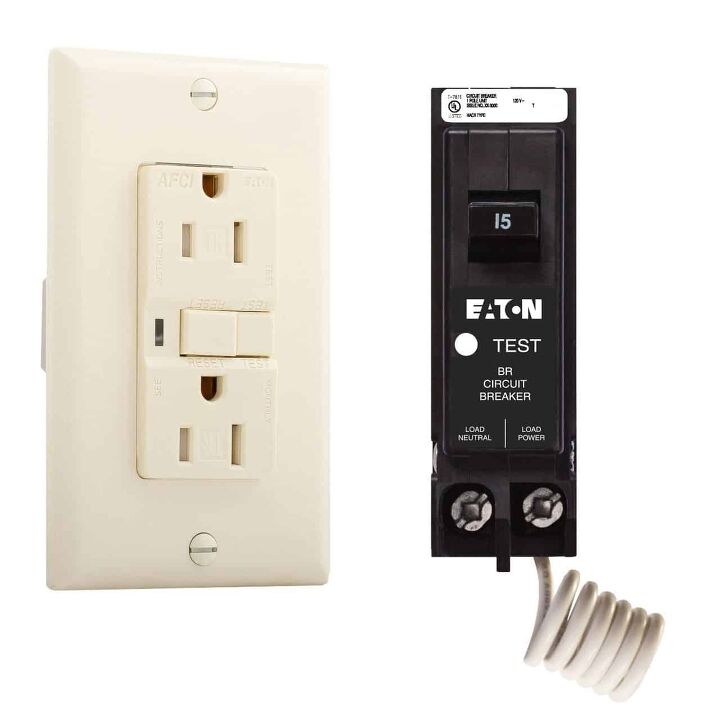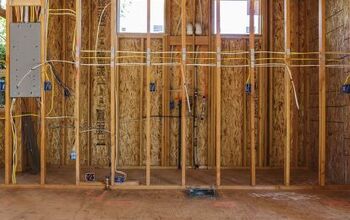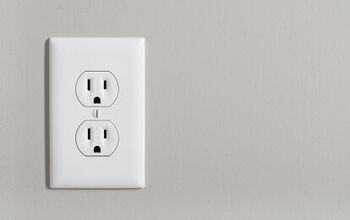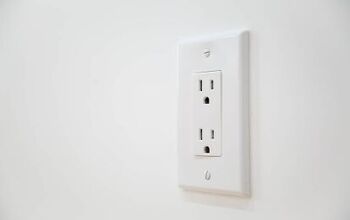Can Two GFCI Outlets Be On The Same Circuit? (Find Out Now!)

Electrical work is one of the hardest things to wrap your head around as a homeowner, and that comes right down to outlets. The standard outlet for American homes is the ground fault circuit interrupter or GFCI outlet. They are effective and protect you from electrical shock, but can two GFCI outlets be used on the same circuit?
Yes, you can use two or more GFCI outlets on the same circuit without any problem at all. The only downside to this is that if one of your GFCI outlets goes down, the others will probably go down as well. That means that you’ll have to reset the outlets either on the outlet itself or from your circuit breaker as a last resort.
It is well worth putting two or more GFCI outlets on the same circuit, and it’s quite common. Follow along as we dive into why it’s a good idea to put two GFCI outlets on the same circuit.
Related Content: GFCI Outlet Not Working? | Surge Protector vs. GFCI | Does A Refrigerator Need To Be On A GFCI Circuit?
What Is a GFCI Circuit?
A GFCI circuit, or ground fault circuit interrupters, is an outlet that is intended to prevent electrical shocks. They are the most common type of circuit and outlet, and GFCI circuits are the standard for electrical home safety. You can find GFCI circuits in kitchens, bedrooms, bathrooms, and even outdoor areas at your home.
Once GFCI circuits were introduced, yearly electrical shock-related deaths dropped by 600 right away. Since 1970, GFCI circuits have been required as part of building codes and it is with good reason. Even though GFCI outlets are safe, they should still be tested by an electrical worker when you move into a new home.
Two GFCIs On One Circuit
You can use two GFCI outlets on one circuit without any problem, and it is common practice. This can be a convenient way to wire your home, but it can also lead to irritating issues. For example, if one GFCI outlet is not working, it will mean that the others likely won’t work either.
That is because multiple GFCIs on the same circuit are generally wired from the load output from the original one. If you lose power to the GFCI outlet that the other outlets are wired to, they typically all go down. This generally means that all of the outlets in that area of the house will stop working, and that can be a big problem.
It is important to have an electrician wire your GFCI outlets whether they are on one or multiple circuits. That is because it can be quite dangerous and lead to electrical shock, even though they are generally safe outlets. It is common practice to wire multiple GFCI outlets to one circuit for areas such as kitchens and family rooms.
GFCI vs. AFCI
An AFCI, or arc-fault circuit interrupter, is another type of outlet that is used in many homes. The main difference between an AFCI and GFCI outlet is that AFCI is used to protect against fire, whereas GFCI outlets protect against shock. You can use AFCI and GFCI outlets on the same circuit without causing any electrical problems.
Homeowners have been required to use both GFCI and AFCI protection in their homes for the last seven years. There are dual-action outlets that utilize AFCI and GFCI technology, and that is your best bet for safety purposes.
Where Are GFCI Outlets Usually Located?
You can find GFCI outlets throughout both the interior and exterior of your home. If you have a modern home, the chances are that each one of your outlets is a ground fault circuit interrupter. Rooms with a high chance of moisture and humidity, such as kitchens and bathrooms, strictly require GFCI outlets as they are at a greater risk for electrical shock.
It’s important to note that GFCI outlets don’t protect the wiring, they only protect the person coming into contact with them. In other words, your wires could be fried, but at least you will walk away with your health. Outdated bathrooms with poor ventilation and strong shower heads require GFCI outlets the most because of the potential buildup of moisture.
That is also why GFCI outlets are commonly used outdoors, and even around swimming pools.
How To Reset a GFCI Outlet
Outlets of any kind can go out due to shorts or inclement weather, and it’s important to know how to reset them. This is extremely important when it comes to GFCI outlets that share the same circuit because that can be tricky. Luckily, GFCI outlets make this easy as they feature reset buttons that any homeowner can easily use.
Step 1. Check Your Outlets
If you have multiple GFCI outlets on the same circuit, they are probably all dead. Still, you must check each of your outlets that share a circuit to make sure that is the case. You can do this by testing the appliances that are plugged into the outlets.
Test your lamps, TV, speakers, and any electrical application that runs through your outlets. The easiest way to do this is to plug a lamp into each outlet to see if it will turn on. If you find that the outlets are dead, unplug all electrical appliances that are connected to them before you do anything else.
Step 2. Locate Circuit Breaker
Once all important electrical appliances are unplugged, you must locate your circuit breaker. Look inside the circuit breaker to identify whether or not any of the circuits have been tripped. If one of the circuit switches in the breaker is facing in the other direction as the others, that means it has been tripped.
You can manually push the switch to the position of the other switches to turn it back on. Now, it’s time for you to reset the breaker entirely.
Step 3. Reset the Breaker
Before you do anything else, turn the breaker off so that you can properly reset it. Push the handle to the “off” position and hold it there for a moment to make sure that it sticks. Your breaker switch should feel firm and hard when you push it, otherwise, that could imply that there’s something wrong with the handle itself.
Wait a minute, then firmly push the breaker handle back to the “on” position to reset it. Your breaker handle should now be in line with the other switches, and if not, that implies a more severe electrical problem. Contact an electrician if that is the case so that you can have your breaker rewired or even replaced.
Step 4. Reset GFCI Button
Every GFCI outlet has a “test” and a “reset” button usually located at the bottom of the outlet. That is part of what makes GFCI outlets so convenient for homeowners with limited electrical knowledge. You will find the “reset” button directly above the “test” button, and it is almost always red.
Simply press the button and see if that gets your outlet working again. Plug a lamp into the GFCI outlet to make sure that it is working correctly. If that doesn’t work, it could point to several potential electrical problems, such as:
- Poor connection
- Damaged terminal
- Loose screws
- Frayed wiring
You may need to enlist the help of a professional electrician if your GFCI outlet doesn’t work after being reset. It generally costs around $200 to have a faulty GFCI outlet replaced with a new one, but it is definitely worth the cost.
Related Questions
Do GFCI outlets go bad?
Yes, GFCI outlets do go bad, and you will eventually need to have them replaced. Your GFCI outlet can stop working anywhere between 5 and 25 years depending on their location. Replace your GFCI outlets if you constantly have to reset them, or they simply stop working entirely.
What do the lights on GFCI mean?
The lights on your GFCI outlet indicate the current state of the outlet’s power. If the outlet has a red light, that means that something may be wrong, and you need to look into it. Green indicates that everything is fine, and it is working correctly, and no light at all means that the circuit probably tripped.
Does every outlet in a kitchen need to be GFCI?
Yes, every outlet in the kitchen needs a GFCI outlet if it is within six feet of wet plumbing appliances. That is because your GFCI outlet is designed to prevent electrical shock, particularly in wet or humid spaces. Any outlet near a sink or faucet in your kitchen must be a GFCI.
Summing It UP
You can put two or more GFCI outlets on the same circuit without any problem at all. It is quite common, especially for rooms such as bathrooms and kitchens. This is a great idea if the room has proximity to plumbing appliances, such as toilets or sinks.
However, if you have multiple GFCIs on the same outlet, they may all go down at once. In that case, you will need to reset the circuit breaker. Consider using multiple GFCIs on the same outlet if you want to simply your electrical work in your home.
More Related Guides

Nick Durante is a professional writer with a primary focus on home improvement. When he is not writing about home improvement or taking on projects around the house, he likes to read and create art. He is always looking towards the newest trends in home improvement.
More by Nick Durante































![10 Most Dangerous Neighborhoods in Baltimore [Updated]](https://cdn-fastly.upgradedhome.com/media/2023/07/31/9075655/10-most-dangerous-neighborhoods-in-baltimore-updated.jpg?size=350x220)